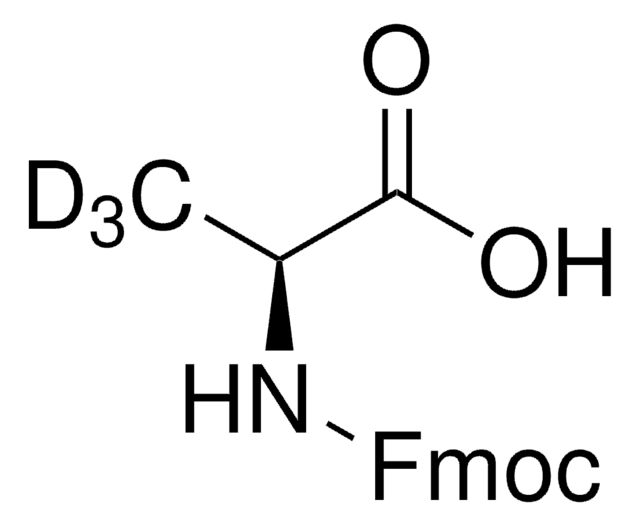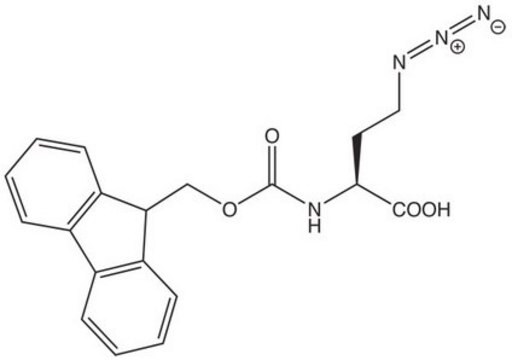900892
L-Azidohomoalanine hydrochloride
Synonyme(s) :
AHA
Se connecterpour consulter vos tarifs contractuels et ceux de votre entreprise/organisme
About This Item
Formule empirique (notation de Hill) :
C4H8N4O2 · HCl
Numéro CAS:
Poids moléculaire :
180.59
Numéro MDL:
Code UNSPSC :
12352209
Produits recommandés
Forme
powder or crystals
Niveau de qualité
Capacité de réaction
reaction type: click chemistry
Pf
139 °C
Température de stockage
−20°C
Chaîne SMILES
[Cl-].[N+H3][C@@H](CCN=[N+]=[N-])C(=O)O
InChI
1S/C4H8N4O2.ClH/c5-3(4(9)10)1-2-7-8-6;/h3H,1-2,5H2,(H,9,10);1H/t3-;/m0./s1
Clé InChI
MHHYJRIDKLZZEO-DFWYDOINSA-N
Catégories apparentées
Application
L-Azidohomoalanine (AHA) is an amino acid analog of methionine that contains a very small modification, specifically an azido moiety. This compound can be fed to cultured cells and incorporated into proteins during active protein synthesis. Detection utilizes the chemoselective ligation or “click ” reaction between an azide and an alkyne or cyclooctyne. For example the azido-modified protein can be detected with either fluorescent alkyne or biotin alkyne. Detection sensitivity with these reagents in 1-D gels and Western blots is in the low femtomole range and compatible with downstream LC-MS/MS and MALDI-MS analysis.
Produit(s) apparenté(s)
Mention d'avertissement
Danger
Mentions de danger
Conseils de prudence
Classification des risques
Self-react. C
Code de la classe de stockage
5.2 - Organic peroxides and self-reacting hazardous materials
Classe de danger pour l'eau (WGK)
WGK 3
Point d'éclair (°F)
Not applicable
Point d'éclair (°C)
Not applicable
Faites votre choix parmi les versions les plus récentes :
Déjà en possession de ce produit ?
Retrouvez la documentation relative aux produits que vous avez récemment achetés dans la Bibliothèque de documents.
Expanding the diversity of chemical protein modification allows post-translational mimicry.
van Kasteren S I, et al.
Nature, 446(7139), 1105-1105 (2007)
Teresa Rayon et al.
Science (New York, N.Y.), 369(6510) (2020-09-19)
Although many molecular mechanisms controlling developmental processes are evolutionarily conserved, the speed at which the embryo develops can vary substantially between species. For example, the same genetic program, comprising sequential changes in transcriptional states, governs the differentiation of motor neurons
Notre équipe de scientifiques dispose d'une expérience dans tous les secteurs de la recherche, notamment en sciences de la vie, science des matériaux, synthèse chimique, chromatographie, analyse et dans de nombreux autres domaines..
Contacter notre Service technique









